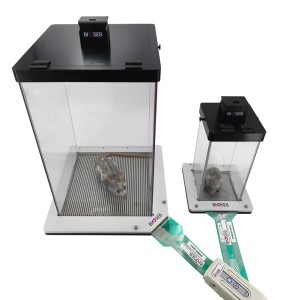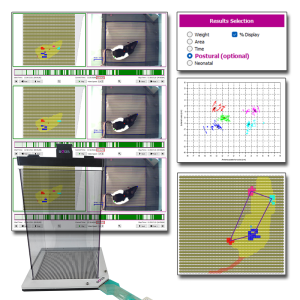Authors
Latremoliere A, Latini A, Andrews N, Cronin SJ et al.
Lab
Kirby Neurobiology Center, Boston Children's Hospital and Department of Neurobiology, Harvard Medical School, Boston, USA.
Journal
Neuron.
Abstract
Human genetic studies have revealed an association between GTP cyclohydrolase 1 polymorphisms, which decrease tetrahydrobiopterin (BH4) levels, and reduced pain in patients. We now show that excessive BH4 is produced in mice by both axotomized sensory neurons and macrophages infiltrating damaged nerves and inflamed tissue. Constitutive BH4 overproduction in sensory neurons increases pain sensitivity, whereas blocking BH4 production only in these cells reduces nerve injury-induced hypersensitivity without affecting nociceptive pain. To minimize risk of side effects, we targeted sepiapterin reductase (SPR), whose blockade allows minimal BH4 production through the BH4 salvage pathways. Using a structure-based design, we developed a potent SPR inhibitor and show that it reduces pain hypersensitivity effectively with a concomitant decrease in BH4 levels in target tissues, acting both on sensory neurons and macrophages, with no development of tolerance or adverse effects. Finally, we demonstrate that sepiapterin accumulation is a sensitive biomarker for SPR inhibition in vivo.
BIOSEB Instruments Used
Dynamic Weight Bearing 2.0 (BIO-DWB-DUAL)
Source :

 Douleur - Allodynie/Hyperalgésie Thermique
Douleur - Allodynie/Hyperalgésie Thermique Douleur - Spontanée - Déficit de Posture
Douleur - Spontanée - Déficit de Posture Douleur - Allodynie/Hyperalgésie Mécanique
Douleur - Allodynie/Hyperalgésie Mécanique Apprentissage/Mémoire - Attention - Addiction
Apprentissage/Mémoire - Attention - Addiction Physiologie & Recherche Respiratoire
Physiologie & Recherche Respiratoire




































 Douleur
Douleur Système Nerveux Central (SNC)
Système Nerveux Central (SNC)  Neurodégénérescence
Neurodégénérescence Système sensoriel
Système sensoriel Système moteur
Système moteur Troubles de l'humeur
Troubles de l'humeur Autres pathologies
Autres pathologies Système musculaire
Système musculaire Articulations
Articulations Métabolisme
Métabolisme Thématiques transversales
Thématiques transversales Congrès & Meetings
Congrès & Meetings 
